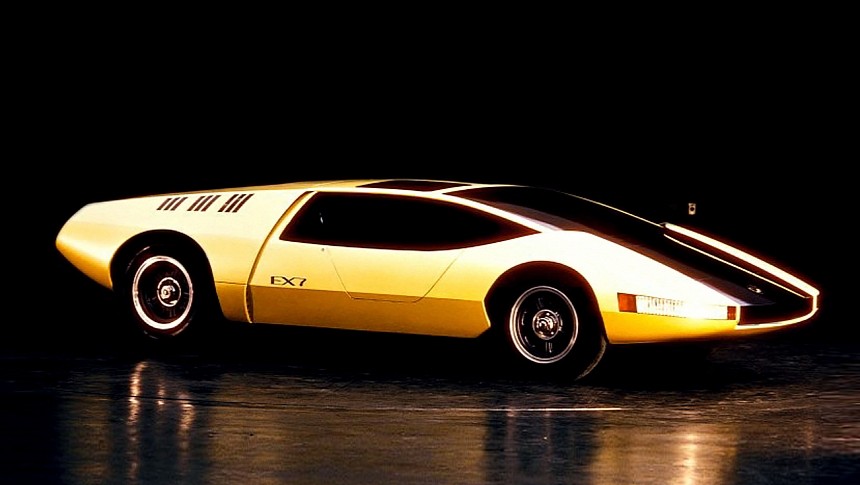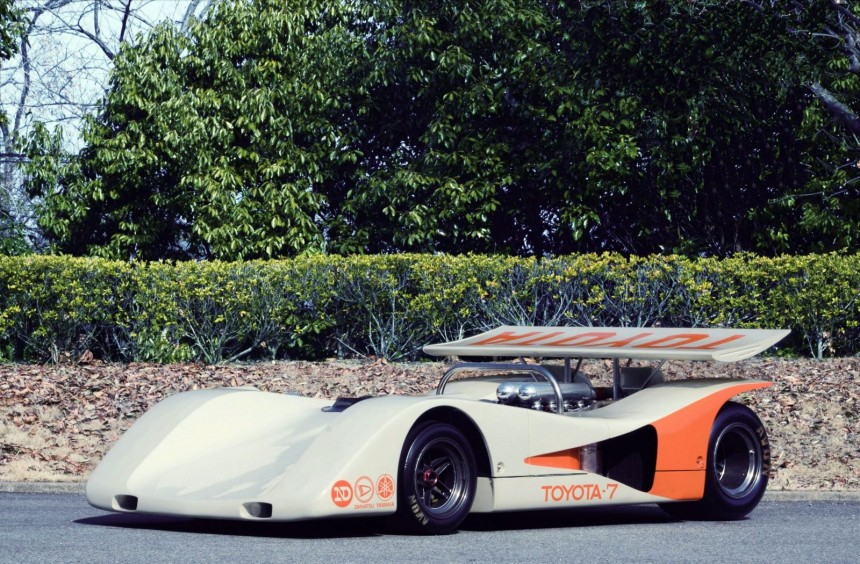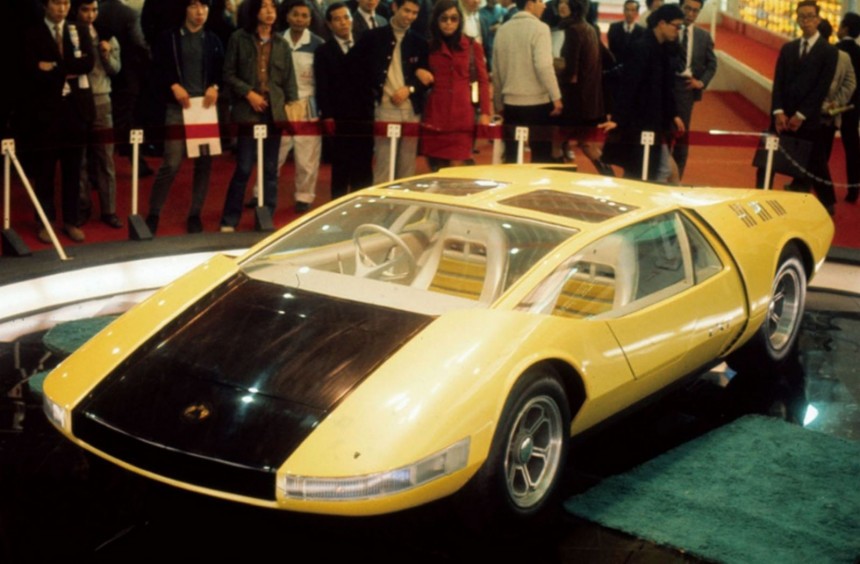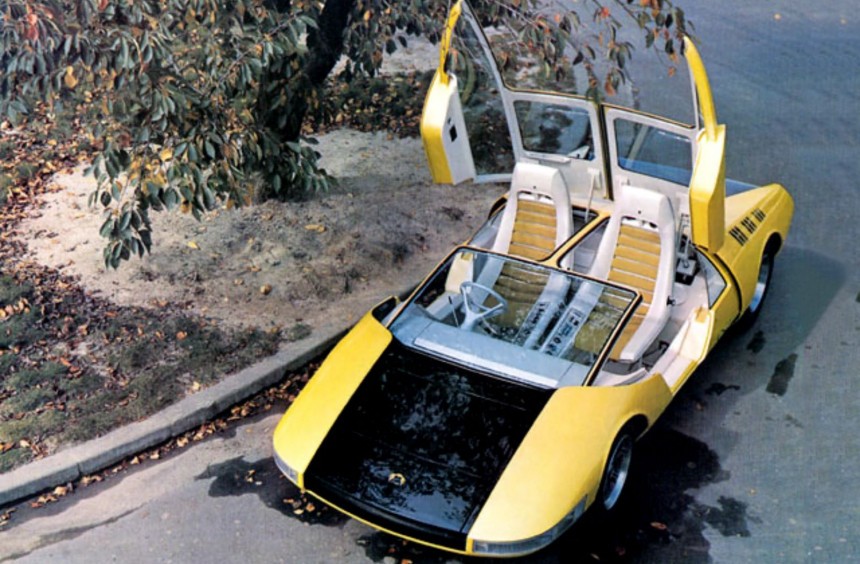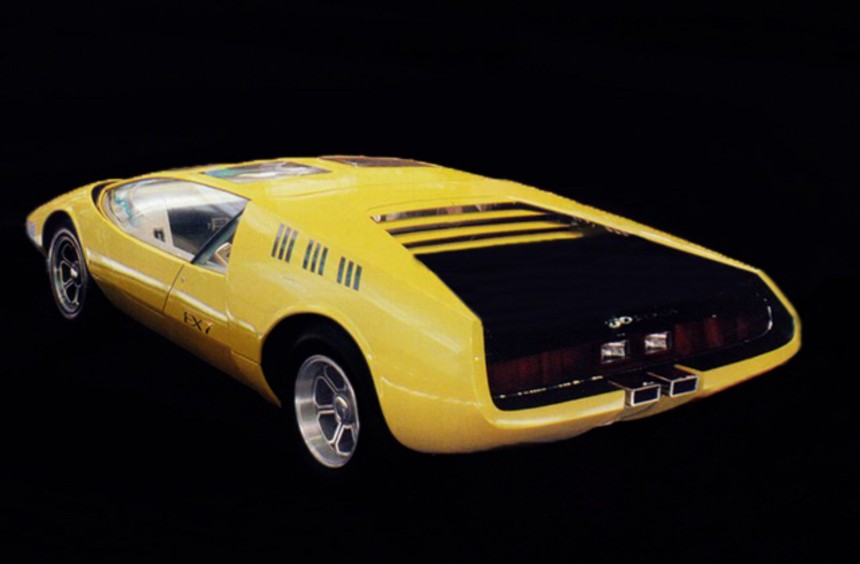Built around a race car chassis covered with a futuristic-looking body, the EX-7 was Toyota's first attempt at developing a supercar.
These days, apart from regular, road-going sports cars, we have high-performance versions that we call supercars, as well as even more powerful, limited-production rockets on wheels that we know as hypercars.
While the hypercar craze was started in 2005 with the debut of the Bugatti Veyron, the supercar phenomenon, as we know it today, was kicked off in the mid-1960s by Lamborghini's mid-engine Miura.
By the early 1990s, established manufacturers and newcomers were developing breathtaking, road-legal supercars that started flooding the market. Even Honda, known for building budget-friendly cars and bikes focused on reliability, surprised everyone with a mid-engine supercar called NSX.
Although the NSX became Japan's first mass-produced supercar, it wasn't the country's first attempt to create such a vehicle. Several concepts were designed during the early days of the supercar, and one of the most fascinating was Toyota's EX-7.
In 1966, the Fédération Internationale de l'Automobile's (FIA) updated rulebook introduced the Group 7. A new sports car category that allowed carmakers an unprecedented level of freedom to create blistering-fast two-seat racing machines, it was quickly adopted by many famous series and races around the world, including North America's Can-Am or the Japanese Grand Prix (before it became part of the Formula 1 calendar).
During the second part of 1967, Toyota partnered with Yamaha and created the company's first thoroughbred race car, the Toyota 7 (officially codenamed 415S).
The 7 debuted at the 1968 Japanese Grand Prix held at the Fuji Speedway but failed to win the race. This led to the development of the New 7 (aka 474S) for the 1969 race and culminated with the 1970 Turbo 7 (578A), which was set to steal the trophy from Nissan, who had won the previous two editions of the Grand Prix.
During the summer of 1970, a Turbo 7 encountered mechanical issues during a test run at Suzuka, which led to a horrific crash that took the life of promising Japanese driver Minoru Kawai.
The death of Kawai shocked the Japanese motorsport world, leading both Nissan and Toyota to withdraw from the 1970 Japanese Grand Prix, which was eventually canceled altogether.
Toyota initially considered entering the remaining Turbo 7 chassis in the North American Can-Am series, but out of respect for Kawai, the manufacturer canceled its Group 7 project. One of those retired chassis was quickly repurposed, becoming the building block for Toyota's first road-going supercar concept.
Initially built by Yamaha, the Turbo 7 aluminum tube race chassis was only slightly modified for road use. It retained the fully independent suspension configuration with height-adjustable dampers and the four-disc braking system.
The mid-engine layout of the race car was also retained. Toyota engineers used the same 5.0-liter 90-degree V8 with Denso electronic fuel injection that powered the race car, albeit without the novel Garrett forced induction system.
While the DOHC twin-turbocharged race unit could make around 800 hp, the naturally-aspirated version used in the supercar concept was detuned to about 450 hp, which was still an impressive figure for a 1970 street car.
The engine was linked to an Aisin SR-55 5-speed manual transaxle reinforced with a heavy-duty, triple-plate clutch, the same gearbox used by the Turbo 7 race cars.
While it lost its turbo magic, the state-of-the-art Group 7 race chassis received a completely new body that looked like it came from a Sci-Fi movie set.
Designed in-house by Toyota with a focus on aerodynamics, the low-slung structure looked decades ahead of the company's 1970 production model lineup.
With its sharply angled front end that flowed into an ample windshield followed by a couple of glass roof panels and a wide, wedge-shaped rear end, the car was captivating from every angle.
Arguably its most awe-inducing feature was the door-opening mechanism. Rather than opening conventionally, the doors and built-in glass roof panels opened vertically towards the rear, revealing a stunning two-seat cabin adorned with a mix of white and yellow upholstery.
Even more impressive than the doors, which opened at the push of a button thanks to a hydraulic system, the bespoke sports seats were also raised automatically, making climbing into the low-slung car much more accessible.
The innovative supercar concept was named EX-7. Its prefix (EX) meant it was the fourth iteration of Toyota's experimental vehicle series, while the suffix (7) marked its connection to the company's Group 7 motorsport program.
It made its public debut at the 1970 Tokyo Motor Show, where it was met with dropped jaws by the public and motoring press. Few could believe that it was a functional concept, and even fewer expected it to be a Toyota.
Though many potent enthusiasts were willing to pay obscene amounts for the privilege to own an EX-7, Toyota never considered a production run.
The car showcased at the Tokyo Show was the sole example of the Japanese carmaker's first supercar concept. Although it made several appearances during the 1970s, it has yet to resurface. There's no clear information about its current whereabouts, with some speculating that it was dismantled, while other sources state that it's still in Toyota's possession, awaiting restoration.
Regardless of whether it's still around, the EX-7 remains a fascinating and trailblazing concept for Toyota. During the five decades since its public debut, the Japanese carmaker followed up with other exciting supercar concepts. It even gave us an iconic limited-production model, albeit one that donned its luxury division's badges: the Lexus LFA.
While the hypercar craze was started in 2005 with the debut of the Bugatti Veyron, the supercar phenomenon, as we know it today, was kicked off in the mid-1960s by Lamborghini's mid-engine Miura.
By the early 1990s, established manufacturers and newcomers were developing breathtaking, road-legal supercars that started flooding the market. Even Honda, known for building budget-friendly cars and bikes focused on reliability, surprised everyone with a mid-engine supercar called NSX.
Although the NSX became Japan's first mass-produced supercar, it wasn't the country's first attempt to create such a vehicle. Several concepts were designed during the early days of the supercar, and one of the most fascinating was Toyota's EX-7.
Group 7 origins
During the second part of 1967, Toyota partnered with Yamaha and created the company's first thoroughbred race car, the Toyota 7 (officially codenamed 415S).
The 7 debuted at the 1968 Japanese Grand Prix held at the Fuji Speedway but failed to win the race. This led to the development of the New 7 (aka 474S) for the 1969 race and culminated with the 1970 Turbo 7 (578A), which was set to steal the trophy from Nissan, who had won the previous two editions of the Grand Prix.
During the summer of 1970, a Turbo 7 encountered mechanical issues during a test run at Suzuka, which led to a horrific crash that took the life of promising Japanese driver Minoru Kawai.
The death of Kawai shocked the Japanese motorsport world, leading both Nissan and Toyota to withdraw from the 1970 Japanese Grand Prix, which was eventually canceled altogether.
Toyota initially considered entering the remaining Turbo 7 chassis in the North American Can-Am series, but out of respect for Kawai, the manufacturer canceled its Group 7 project. One of those retired chassis was quickly repurposed, becoming the building block for Toyota's first road-going supercar concept.
Race-bred chassis and powertrain
The mid-engine layout of the race car was also retained. Toyota engineers used the same 5.0-liter 90-degree V8 with Denso electronic fuel injection that powered the race car, albeit without the novel Garrett forced induction system.
While the DOHC twin-turbocharged race unit could make around 800 hp, the naturally-aspirated version used in the supercar concept was detuned to about 450 hp, which was still an impressive figure for a 1970 street car.
The engine was linked to an Aisin SR-55 5-speed manual transaxle reinforced with a heavy-duty, triple-plate clutch, the same gearbox used by the Turbo 7 race cars.
A bold take on the supercar of the future
Designed in-house by Toyota with a focus on aerodynamics, the low-slung structure looked decades ahead of the company's 1970 production model lineup.
With its sharply angled front end that flowed into an ample windshield followed by a couple of glass roof panels and a wide, wedge-shaped rear end, the car was captivating from every angle.
Arguably its most awe-inducing feature was the door-opening mechanism. Rather than opening conventionally, the doors and built-in glass roof panels opened vertically towards the rear, revealing a stunning two-seat cabin adorned with a mix of white and yellow upholstery.
Even more impressive than the doors, which opened at the push of a button thanks to a hydraulic system, the bespoke sports seats were also raised automatically, making climbing into the low-slung car much more accessible.
The star of the 1970 Tokyo Motor Show
It made its public debut at the 1970 Tokyo Motor Show, where it was met with dropped jaws by the public and motoring press. Few could believe that it was a functional concept, and even fewer expected it to be a Toyota.
Though many potent enthusiasts were willing to pay obscene amounts for the privilege to own an EX-7, Toyota never considered a production run.
The car showcased at the Tokyo Show was the sole example of the Japanese carmaker's first supercar concept. Although it made several appearances during the 1970s, it has yet to resurface. There's no clear information about its current whereabouts, with some speculating that it was dismantled, while other sources state that it's still in Toyota's possession, awaiting restoration.
Regardless of whether it's still around, the EX-7 remains a fascinating and trailblazing concept for Toyota. During the five decades since its public debut, the Japanese carmaker followed up with other exciting supercar concepts. It even gave us an iconic limited-production model, albeit one that donned its luxury division's badges: the Lexus LFA.
